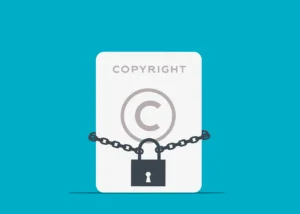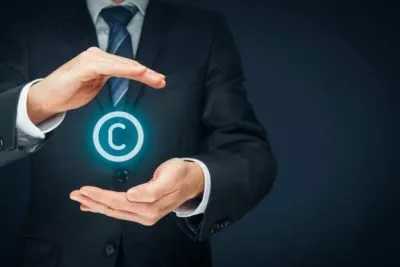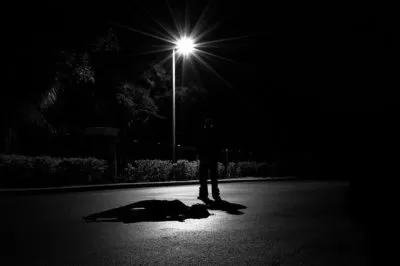
- Originally Published on October 28, 2024
How to Use DMCA Takedown Notices to Remove Unauthorized Porn Content
Are your private intimate photos and videos being shared online without consent? Or is your adult content studio’s copyrighted work getting pirated on tube sites, costing you substantial lost revenues? You’re not alone. But there are powerful legal tools to help you fight back and reclaim control.
The Digital Millennium Copyright Act (DMCA) allows you to file takedown notices to get infringing porn content removed fast. At Minc Law, we’ve helped hundreds of clients use this process to clean up their search results and protect their reputations, privacy and livelihoods.
In this guide, you’ll learn the exact steps to file effective DMCA notices and get unauthorized pornographic content taken down quickly and permanently.
To remove unauthorized porn content with a DMCA takedown notice:
- Identify all URLs where your copyrighted content appears
- Take screenshots of the infringing content as evidence
- Draft the notice including your contact info, the infringing URLs, a statement that you have a good faith belief the content is unauthorized, and your signature
- Send the notice to the site’s DMCA agent via their preferred contact method (look up at copyright.gov/dmca-directory)
- Also submit notices to search engines like Google for widespread removal
- Follow up firmly if content isn’t removed and consider getting professional legal help
What is DMCA and How Does It Apply to Removing Porn Content?
The Digital Millennium Copyright Act (DMCA) is a federal law enacted in 1998 to address the unique challenges of protecting copyrights in the digital age. It provides a legal framework for content owners to get unauthorized material removed from the internet quickly and efficiently.
One of the key provisions of the DMCA is the “notice and takedown” process. This allows copyright holders to send notices to web hosts, internet service providers, and search engines identifying infringing content and requesting its removal. If the notice is valid, the recipient must promptly take down or disable access to the material, or risk losing their “safe harbor” protections and facing liability themselves.
The DMCA applies to all types of copyrighted content, including adult content and pornography. If you created the photo, video, text or other material, you are the copyright owner from the moment it was made – regardless of whether you registered it with the U.S. Copyright Office. This means you can use DMCA notices to get any unauthorized copies of your porn content removed.
However, there are a few special considerations when dealing with adult material. Explicit content can spread rapidly online, so it’s crucial to act fast to contain the damage. Using DMCA notices to remove it from multiple sites and search results helps limit the leak. But it’s an ongoing battle requiring regular monitoring.
Given the sensitive nature of the content, it’s also important to document the infringement thoroughly while taking steps to protect your privacy. An experienced internet attorney can help you balance these concerns.
How to File a DMCA Takedown Notice for Porn Content
Now that you understand how DMCA applies to your situation, let’s walk through the process of preparing and filing an effective takedown notice, step-by-step.
Step 1: Identifying and Documenting Infringing Porn Content
Start by searching the web for your stolen content. Check major porn sites, tube sites, peer-to-peer networks, and search engines. Infringement can pop up anywhere.
When you find an unauthorized copy of your work, document it carefully:
- Screenshot the full page showing the surrounding context, site name and URL
- Zoom in and screenshot the specific content and any identifying watermarks or logos
- For videos, record the footage with a screen capture app as additional evidence
- Save the HTML source code for the page the infringing content appears on
- For search results, screenshot the results page with the infringing link highlighted
Organize and timestamp this evidence in a folder. Repeat the process for every infringing instance, across every site and search result you find.
Proving you own the copyright to this content is also key. Gather original, high-quality copies of the content as well as any documentation demonstrating creation or ownership, like:
- Original, unedited photo and video files with metadata intact
- Copyright registration certificates from the U.S. Copyright Office
- Timestamped posts or uploads establishing your initial publication
- Contracts, model releases or other paperwork showing you own the rights
You’ll be sharing these materials with the sites and hosts, so redact any highly sensitive personal information.
Step 2: Drafting a Valid DMCA Takedown Notice
With your evidence gathered, it’s time to craft your DMCA takedown notice. To be legally-compliant, it must include:
- Your contact information (name, address, phone, email)
- Links to the infringing content you want removed (specific URLs)
- A statement that you have a good faith belief the content is not authorized by the copyright owner, the law, or fair use
- A statement that everything in your notice is accurate
- A statement that you are authorized to act on behalf of the copyright owner
- Your physical or electronic signature
Be specific and professional. Reference the DMCA by name. Clearly identify each infringing URL and explain how it infringes your rights. Attach the screenshots, original content files, and copyright documentation. Close with a respectful but firm demand that the content be removed immediately.
If you’re feeling overwhelmed, don’t worry. There are DMCA notice templates and generators available online. An experienced DMCA attorney will also be able to draft a comprehensive, legally-sound notice customized to your unique needs.
Step 3: Determining Where and How to Send DMCA Notices
Next, you need to figure out who to send the DMCA notice to and how to contact them. If the site with your stolen content is uncooperative or unresponsive, you can still get results by going up the chain to their web host or ISP.
- For sites like Pornhub, XVideos, OnlyFans, etc., check their DMCA or Copyright page for a form or contact info for their designated DMCA agent. If there is none, whois domain lookup tools may reveal their host.
- To find the host, enter the site’s URL into a free WHOIS tool like Whois.net. Look for the “Registrar” or “Hosting Provider” fields. Visit the provider’s site and search their legal pages for their DMCA agent info.
- The U.S. Copyright Office also maintains a directory of designated agents at https://dmca.copyright.gov/osp/. Search for the host and send your notice to the contact listed.
Most hosts accept DMCA notices via email or their own submission form. Just copy/paste your notice text and attach it as a PDF or image files.
Follow the same process with search engines like Google and Bing to remove your content from search results too. Each has a simple DMCA form: Google’s is at https://support.google.com/legal/answer/3110420 and Bing’s is at https://www.microsoft.com/info/cpyrtInfrg.aspx.
International sites with no U.S. presence can be trickier, but working with their upstream providers or using foreign DMCA equivalents may help. A DMCA lawyer can provide guidance here.
Step 4: After Filing the DMCA Notice
After filing your DMCA notice, the wait begins. The DMCA requires hosts to act “expeditiously” to remove infringing content, but doesn’t specify an exact timeframe. In practice, most material comes down within 24-72 hours.
If a site is refusing to remove your content after receiving a valid notice, follow up firmly but professionally. Emphasize that ignoring your notice opens them to personal liability. Be prepared to provide additional evidence or explanation if needed.
For persistent or high-volume infringement, sending repeat notices whenever the content re-appears is often necessary. This is where having a template and an organized system helps. Minc Law offers a professional DMCA takedown and monitoring service to shoulder the burden for you.
If the unauthorized porn content is causing serious damage or lost income, you may need to pursue additional legal action like a copyright lawsuit. Our experienced internet attorneys can review your options and develop a tailored strategy to resolve your situation.
FAQs on Using DMCA Notices for Porn Takedowns
Here are answers to some common questions we get from our clients dealing with stolen porn content:
What if I didn’t register copyrights for my content?
You don’t need to register your copyrights to file DMCA takedown notices. As soon as you create a work, you own the rights. But if you need to file a copyright lawsuit later, having a registration strengthens your case and makes you eligible for statutory damages. Consider registering key content.
How long does the DMCA process take?
After receiving a valid DMCA notice, most sites remove content within 24-72 hours. Search engines typically de-index infringing URLs within a few days. But new copies can pop up repeatedly on different sites, so ongoing monitoring is often needed. A good DMCA agent can expedite the process.
Can I file DMCA anonymously for intimate content?
If you want to keep your name private for sensitive porn content, you can hire an agent or attorney to file DMCA notices on your behalf. They’ll use their own contact info. But you’ll still need to provide evidence that you’re the owner to them directly. And sites may still see your name on the copyright registration.
What are the penalties for false DMCA notices?
If you file a DMCA notice in bad faith or intentionally misrepresent that content is infringing, you could be liable for damages to the site owner. Only file notices when you know you own the content free and clear. When in doubt, consult an attorney.
When should I get a lawyer involved?
Many straightforward DMCA cases can be handled without a lawyer. But if you’re dealing with a huge volume of infringement, the site owner is fighting back aggressively, or the stakes are high, it’s wise to consult an experienced DMCA attorney. They can also help secure protections if you need to stay anonymous or if you’re dealing with other related issues like harassment or blackmail.
Protect Your Porn Content and Reclaim Your Peace of Mind
Seeing your intimate photos or hard-earned adult content spread online without permission is a terrible violation. But you don’t have to suffer in silence or accept the damage to your privacy, reputation and livelihood. With DMCA takedown notices, you have a powerful tool to fight back and remove infringing content fast.
At Minc Law, we’re here to support you through every step of the process. Our experienced internet attorneys have helped thousands of individuals and adult industry professionals swiftly remove nonconsensual porn and reclaim their peace of mind.
If you’re feeling overwhelmed or need backup, reach out for a confidential consultation.
Get Your Free Case Review
Fill out the form below, and our team will review your information to discuss the best options for your situation.
This page has been peer-reviewed, fact-checked, and edited by qualified attorneys to ensure substantive accuracy and coverage.



